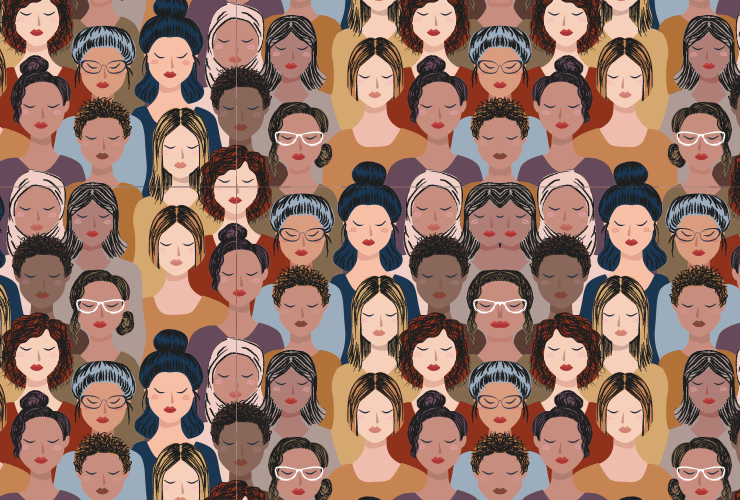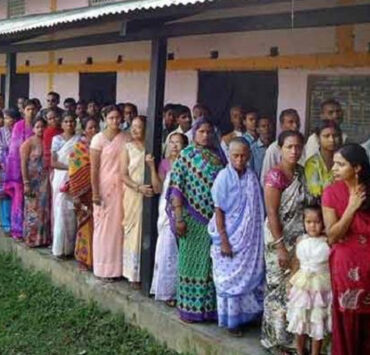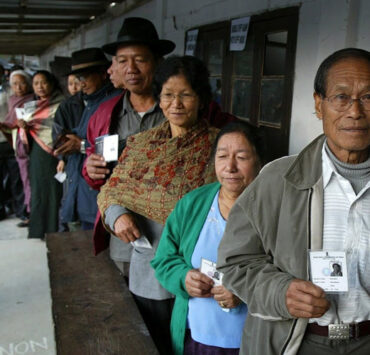
“Wrap it up, this final Lok Sabha session,” says Tara Krishnaswamy of the newly formed, non-partisan Indian Women’s Caucus spearheading a renewed effort to ensure gender-balanced representation in Parliament and state Legislative Assemblies.
There are 11% women in Parliament and 9% in state assemblies.
Outcomes can only depend on inputs; only 5-10% women are elected as only so many are given tickets by major parties.
Parties have lakhs of women as members, but rarely as decision-makers.
What should labour without a career ladder be termed?





This is the full text of the article (before it was edited down for publication):
Women’s Reservation Bill – Good, Bad or Ugly?
‘WRAP it up, this final Lok Sabha session!
It is not to say that 70 years of male dominated policy making has served India poorly, but to say that it certainly has not served India well enough. The organic progress of democracy and political party machinery, has utterly failed to provide women reasonable opportunities to govern in states and the centre. The percentage of women in Parliament is about 11% and the State Assemblies falling below 9%.
Numerous studies on the 25 years of Panchayat experiences where representation is fairer due to reservations, show that women tend to prioritise health, education & sanitation in budgets & projects, while male counterparts lean towards cement & construction. Both are important, but well rounded policy with a diversity of lived experiences and perspectives is clearly absent. This is evidenced in the woeful state of public schools, appalling public health facilities, substandard infrastructure, dubious finance and crumbling farming.
Outcomes can be no better than inputs; only 5-10% women are elected as only so many are given tickets to contest by the major political parties. State elections in the past years bear mute and shameful witness to this, a habit of both state and national parties.
Is there a dearth of women candidates?
The same parties that have lakhs of women members, have rarely any women leading them, especially their decision making bodies Come elections, manifesto committees, funding and budgeting bodies, candidate selection groups, campaign management committees, are all populated by men, at least to the tune of 80-90%, many 100%. How then should party women gain experience and grow, when consigned to a sandbox called the Women’s Wing? The sole purpose of the Women’s Wing of a party is to garner the female vote without providing those very electors adequate representation, and those very female party workers who canvassed those votes, fair pathway for political ambition.
What should labour without a career ladder be termed?
Furthermore, parties often have a section designated as “Women’s Manifesto” within the parent document, or a separate “Women’s Manifesto.” As if to signal that the main agenda of the party does not apply to 50% of the population they will govern, and 50% of those that elect them to power! Rape and gender violence are not women’s issues, they are law and order failures. Maternal health is a public health issue and child care, a social not a women’s issue.
An even more egregious waste of talent is the 10 lakh or so women elected every 5 years in the past 2+ decades to local bodies. Even if only 10% are competent, and that is a conservative hypothetical, that amounts to lakhs of women who should be in the eligibility pool and considered for State Assemblies. That lateral ladder is fictitious and women in local bodies know that superlative performance or not, their next stop at the end of the term is their kitchen.
What further proof is needed of an over abundance of women’s political careers stunted than the simultaneous and spontaneous contestation of 100s of women in state elections? Contesting as Independents, also called “rebel candidates,” they are ones denied tickets by their parties.
The insidious amalgam of patriarchy and insecurity of sharing power, has reduced representative democracy to a farce, assuring participation in governance to any marginalised group only when reservations are in place. Hence the stark contrast between the graduation of tens of lakhs of women from local bodies governance versus the denial of entry to beyond a handful of women in states and the centre.
What is needed urgently is a debate on the so-called Women’s Reservation Bill, with the modified objective of guaranteed representation to women. The nomenclature of the Women’s Reservation Bill itself does it huge disservice. What India needs and what women want is an assurance of representation by those who understand what it is to be a woman living in India. The Bill must be renamed Women’s Representation Assurance Policy (WRAP), and indeed repurposed.
Reservation is but one instrument in that arsenal. A law mandating that political parties distribute a percentage of tickets to women, as the Election Commission itself had proposed, is a prerequisite for systemic change. The core of the Bill: pros and cons of reserving constituencies, penalties of rotating reservations, complications of double-member constituencies, and the answer to the OBC demands etc., must be debated, inveigled & resolved.
The final session of the Lok Sabha is set to commence December 11th 2018. This is the last opportunity for the only government in recent history to be formed with thumping majority to table, debate & pass a legislation guaranteeing women representation in Assemblies & Parliament. After all, the BJP had promised to deliver the Bill in their 2014 manifesto. The government that has managed to pass the Aadhaar as a money bill and even the controversial Triple Talaq with alacrity, must seize this opportunity.
The question is no longer if they have the political will, but rather the strategy to carve out electoral dividends from gifting a Women’s Representation Assurance Policy (WRAP) to India.”